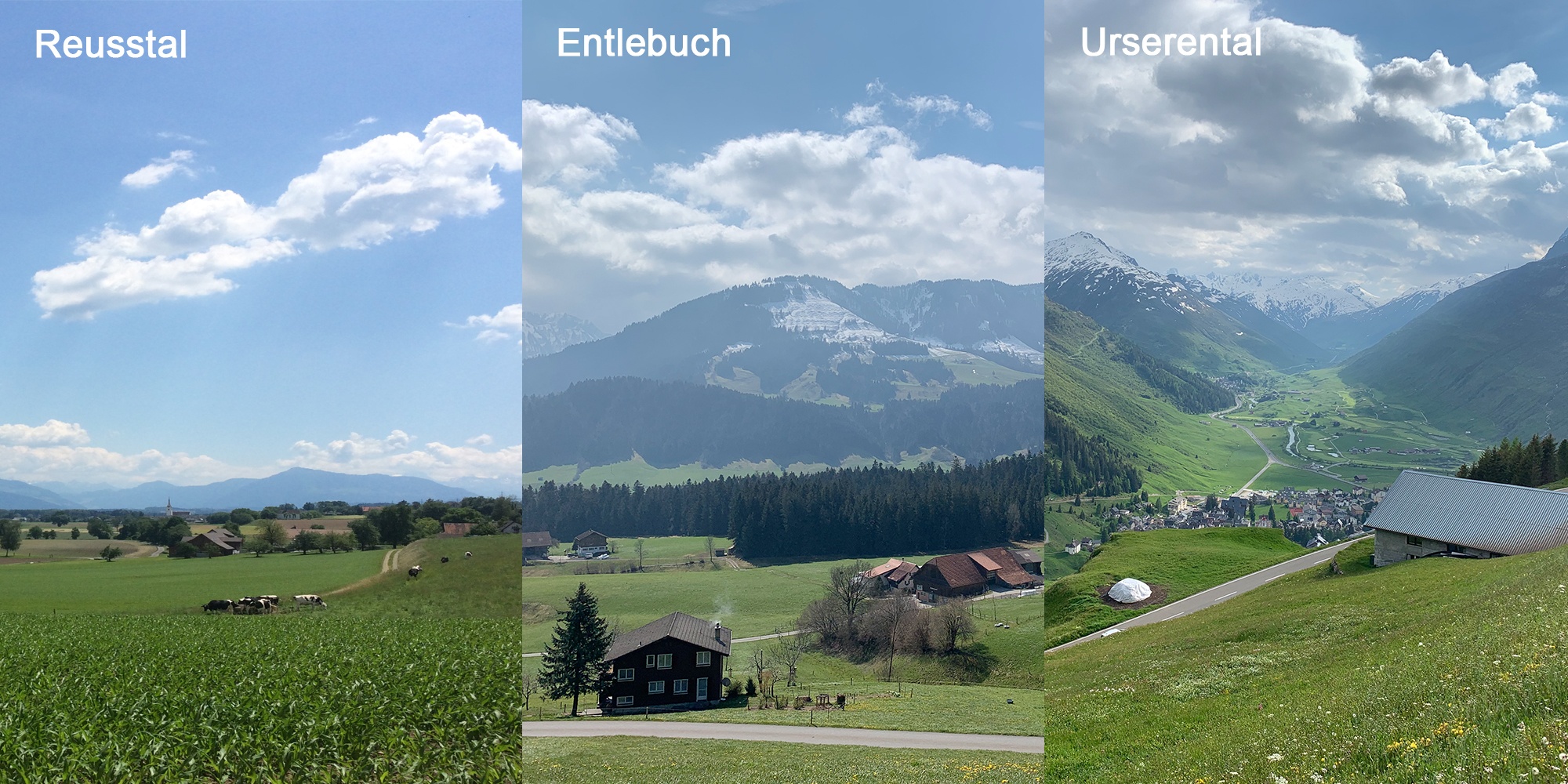Reality Check: Has the Neo-Liberal, Conservative or Agro-Ecological Vision of Swiss Farming Prevailed?
Photos: Agroscope
Agroscope studied the changes in the agricultural sector over the past twenty years in three Swiss regions and compared them with the visions of three associations: Avenir Suisse, the Schweizer Bauernverband and Landwirtschaft mit Zukunft.
Opinions differ as to how the Swiss agricultural sector should develop in future. Agroscope experts have studied the changes in agriculture over the past twenty years in three different regions of Switzerland – in the lowlands (Reusstal), in pre-Alps (Entlebuch) and in the mountain region (Urserental).
To assess developmental trends in the agricultural sector, the current situation was compared with the visions of three different associations: Avenir Suisse (AS) (= ‘Foundation for the Future of Switzerland’, a neo-liberal think tank), the Schweizer Bauernverband (SBV) (= ‘Swiss Farmers’ Union’) and Landwirtschaft mit Zukunft (LmZ) (= ‘Agriculture with a Future’, a federation of agro-ecological movements).
Two of the three regions developing in line with Avenir Suisse proposals
In just twenty years – less than a human generation – significant changes have occurred with far-reaching implications for individual farms and for the agricultural landscape as a whole. These changes are the result of the reconciliation of the interests of various stakeholders, represented here by the three organisations, AS, the SBV and LmZ.
In two of the three regions, general agreement with the aims of AS is strongest (Reusstal 70%, Entlebuch 68%). Agreement with the vision of the SBV (59% and 56%) and LmZ (40% and 41%) was lower. Only in the mountain region of the Urserental have the pro-status quo forces closest to the aims of the SBV prevailed (58%), with AS and LmZ coming a close second and third (54% and 53%). The ‘green’ visions gained the least acceptance in all three regions (Reusstal 40%, Entlebuch 41%, Urserental 53%); however, there were also major differences between the individual farms in all three regions.
The objective: to boost productivity while conserving resources
The observed developments arise in combination with various influencing factors such as technical progress, costs and prices, regulations, agricultural policy and direct payments, farm structures and the subjective preferences of the individual farmers. The impact of these drivers on the observed developments was not explicitly investigated. Climate change, the biodiversity crisis, resource scarcity and social trends will lead to agriculture continuing to change and having to adapt in future. The aim is for agriculture to remain productive and even increase its productivity whilst consuming less environmental resources, protecting the climate and biodiversity, and guaranteeing good soil and water quality. Although the majority of stakeholders would most likely declare their agreement with this objective, there is disagreement as to how it should be achieved. The various stakeholders, represented here by Avenir Suisse, the Swiss Farmers’ Union and Landwirtschaft mit Zukunft, will continue to pursue a reconciliation of interests
Conclusions
- Agricultural development in the Reusstal (lowlands) and in Entlebuch (pre-alps) was characterised by progressive structural change, and matched the vision of Avenir Suisse most closely (Reusstal 70%, Entlebuch 68%). Agreement with the aims of the Schweizer Bauernverband (SBV) was around ten percentage points lower (59% and 56%). The lowest agreement was with the Landwirtschaft mit Zukunft vision (40% and 41%).
- In the Urserental (mountain region), agreement between the three stakeholder groups was more balanced. The highest agreement was with the vision of the Schweizer Bauernverband (SBV) (58%), although agreement with Avenir Suisse (54%) and Landwirtschaft mit Zukunft (53%) lagged only slightly behind.
- The ‘green’ visions gained the least acceptance in all three regions.
Bibliographical reference
Reality Check: Has the Neo-Liberal, Conservative or Agro-Ecological Vision of Swiss Farming Prevailed?



